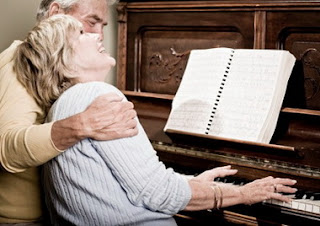Everyone will want to avoid a stroke. Stroke will leave an unpleasant variety of disorders such as difficulty moving either in part or whole body as well as numerous other disorders. Whether the stroke is the end of everything? Of course not. There are still many treatment therapies that can be done for recovery, including music therapy.
What is a stroke?
Stroke occurs when blood stops flowing into certain areas in the brain. This will lead to cell damage and cell dysfunction. The effects of stress can vary from one person to another depending on the severity and area of the brain damaged cells.
A common neurological disorder after stroke experienced a weak form of the condition and loses the ability to move, loss of coordination and balance, loss of sensory ability and difficulty speaking or swallowing. Other symptoms may include pain, memory loss and confusion, excessive sensitivity, anxiety and depression.
One of the therapies that can be used to help the recovery is to use music therapy.
How can music therapy help children of stroke patients?
Both medically and scientifically, music therapy has proven effective in helping the process of rehabilitation after a stroke. This therapy might be particularly helpful:
• Movement and muscle control
• Talking and communication
• Cognitive
• Mood and motivation
Movement and muscle control
Regular beats, rhythmic patterns, and precise musical timing can increase the ability to move and control the muscles. Its activities may include:
• Playing the drums can improve movement in the arm
• Exercise moves to follow the beat of music
• Adjust the music that matches your natural walking rhythm
Speech and communication
Music therapists to use rhythm, melody and singing to improve communication skills after a stroke.
Its activities may include:
• Exercise mouth muscles
• Take one phrase and customize it with music, the first words are sung, and spoken
• Saying the words with the same final sound, uttered repeatedly, or say the word quickly
Cognitive
All music and musical structures are used to strengthen the cognitive aspects including attention, memory, ability to organize, to solve the problem. Its activities may include:
• Creating songs that contain important information
• Doing the appearance of a band
• Perform rhythmic repetition game
Mood, motivation and overcome the pain
Emotional and aesthetic qualities of music are used to improve mood, motivation, and help overcome the pain. Activities include:
• Writing songs
• Record
• Improvisation
• Gig
• Listen to music
Play an instrument requires a lot of aspects of the brain and body, it can also be fun. This therapy not only be done on-site therapist, but can also be done at home with the help of family members. After all, family support is one important factor in helping the recovery.
How music therapy can be done at home?
Your music therapist can make a tape or CD that is tailored to your needs and preferences. This could help the further recovery. Some examples include:
• Music for the sport
• Music for relaxation
• Music for pain
• Music that can be sung
Direct Recording your music therapy sessions
After recording, at home you can more easily integrate music with your personal recovery program. Try the following tips:
Listen. Listening to music either by yourself or with family or friends can relieve stress and anxiety.
Sing. Singing can improve mood and increase body resistance against infections. Never mind your voice.
Play. Take a musical instrument that is near you and play.
Dance. Move your body to the rhythm of music can improve circulation, strengthen muscles and will certainly make you feel better.

No comments:
Post a Comment